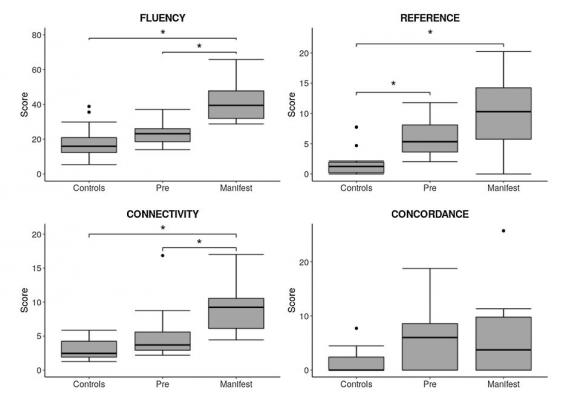Language disintegration in spontaneous speech in Huntington’s disease: a more fine-grained analysis.

Huntington’s disease (HD) is a neurodegenerative disease causing motor symptoms along with cognitive and affective problems. Recent evidence suggests that HD also affects language across core levels of linguistic organization, including at stages of the disease when standardized neuropsychological test profiles are still normal and motor symptoms do not yet reach clinical thresholds (‘pre-manifest HD’). The present study aimed to subject spontaneous speech to a more fine-grained linguistic analysis in a sample of 20 identified HD gene-carriers, 10 with pre-manifest and 10 with early manifest HD. We further explored how language performance related to non-linguistic cognitive impairment, using standardized neuropsychological measures. A distinctive pattern of linguistic impairments marked off participants with both pre-manifest and manifest HD from healthy controls and each other. Fluency patterns in premanifest HD were marked by prolongations, filled pauses, and repetitions, which shifted to a pattern marked by empty (unfilled) pauses, re-phrasings, and truncations in manifest HD. Both HD groups also significantly differed from controls and each other in how they grammatically connected clauses and used noun phrases referentially. Functional deficits in language occurred in pre-manifest HD in the absence of any non-linguistic neuropsychological impairment and did largely not correlate with standardized neuropsychological measures in manifest HD. These results further corroborate that language can act as a fine-grained clinical marker in HD, which can track disease progression from the pre-manifest stage, define critical remediation targets, and inform the role of the basal ganglia in language processing.